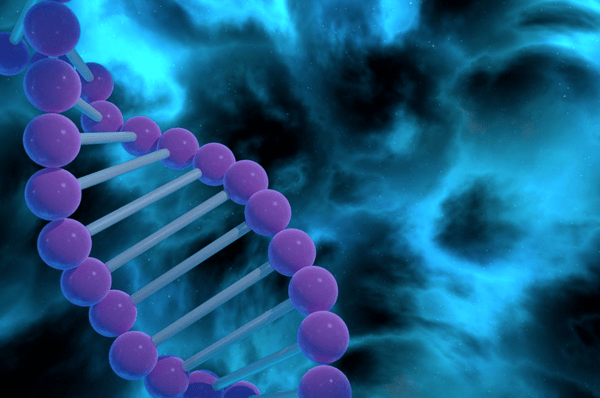Nanobeads have applications ranging from basic science research to clinical imaging and targeted drug delivery. Nanobeads are composites of nanoparticles. Nanoparticles are defined as being less than 100 nanometers in diameter, while nanobeads are usually around 50 to 200 nanometers in diameter. There are also microbeads, but these are much larger and have diameters of at least 1000 nanometers, or 1 micrometer, which is close to the size of a cell. Bacterial cell diameters range from 0.5 to 2 micrometers in diameter, and animal cells range from 10 to 30 micrometers in diameter. The size of nanobeads is very important to their function; partly because they are so much smaller than a cell, which enables them to be used for cell labeling and isolation. In the case of magnetic nanobeads, the nanometer size imparts the paramagnetic property that is so valuable for biomagnetic separation, clinical imaging (contrast enhanced magnetic resonance (MRI)), and therapeutics such as magnetic hyperthermia for targeted tumor destruction.
Magnetic Nanobeads
Magnetic nanoparticles are iron oxide particles that are less than 100 nm in diameter. Magnetic nanobeads are composites of multiple magnetic nanoparticles with or without other materials such as polymer binders and coatings. Magnetic nanobeads for biomagnetic separation usually have some kind of functional molecule on their surface to enable protein attachment and binding. These outer-shell proteins are designed to specifically recognize ligands on the target cell surface. Immune proteins, in particular antibodies, are commonly used because they have a highly specific “lock-and-key” recognition of cell surface protein epitopes. This is desirable because it improves the efficiency of the separation process by decreasing false positives and off-target effects. Other surface proteins commonly used are protein A and G for binding general IgGs.
Types of Nanobeads
While some of the earliest literature referencing nanobeads discusses magnetic nanobeads, the term has recently been applied to other types of material composites that aren’t necessarily paramagnetic. There are fluorescent nanobeads, which are a composite of fluorophores embedded in a silica matrix, and many other combinations of materials including quantum dots and nanocrystals embedded in a variety of polymers. Some recent advancements also include superparamagnetic nanobeads, which can provide temperature dependent separation. The common theme is that nanobeads are made up of many smaller particles, and they are usually held together by a matrix of some other material, usually polymer. Nanobeads often differ in their pore size, which determines what type of material can be delivered to a specified location. Some nanobeads with relatively larger diameters can store large drugs for directed therapies.
Others may contain smaller oxidative or reductive agents for specific chemical purposes. Some pores are formed to hold different chemical compositions, varying from proteins, enzymes, amino acids, and carbohydrates. These nanobeads may have proteins on their outer shells for the purpose of cell labeling and isolation. In this case, the isolation technique would be fluorescence-based such as fluorescence activated cell sorting. Many fluorescent nanobeads aren’t used for isolation at all, but instead are used for immunofluorescent tissue labeling. These nanobeads can have desirable properties such as reduced photobleaching and concentrated, high contrast labels. Other nanobeads may have ligands coated on the outer shell for stability. Quantum dot nanobeads are highly tunable, and can offer a labeling technique that eliminates background autofluorescence from the tissue. These nanobeads are also used at the forefront of recent advancement in LEDs, solar cell, and semiconductor innovations. Their tunability corresponds with size as well, so some smaller nanobeads could be used to indicate presence in areas larger beads could not reach.

Nanobead Synthesis
The general method of synthesizing nanobeads involves mixing the desired particles (magnetic, fluorescent, etc.) with solvent in the presence of the polymer that they will be embedded in. The solvent is then allowed to slowly evaporate while the polymer and particles self-assemble. Another solvent may be added to encourage the formation of individual nanobeads rather than one large conglomerate of particles and polymers. The exact formulations will always depend on the materials involved and the desired size of the nanobeads. More detailed procedures can be found in the scientific literature.
Related news





